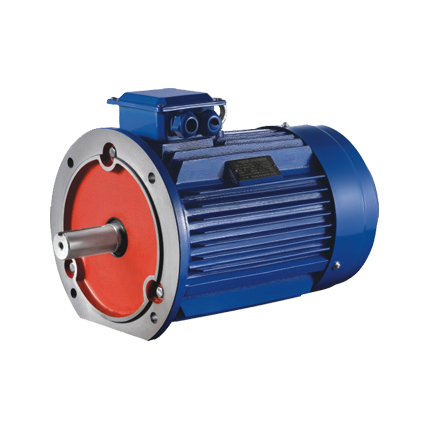Summary:YVFEJ2 electromagnetic brake motor is a drive motor that uses electromagnetic force to hold the load. They come in many forms, but all operate on the same principles. The armature is moved against the magnetic surface by the magnetic field to generat......
YVFEJ2 electromagnetic brake motor is a drive motor that uses electromagnetic force to hold the load. They come in many forms, but all operate on the same principles. The armature is moved against the magnetic surface by the magnetic field to generate braking torque. They are used in many different industries, including robotics, aerospace and medical systems. SEPAC is one of the manufacturers of electromagnetic brakes, specializing in magnetic and spring-engaged versions.
Magnetically engaged friction brake
Magnetically engaged friction brakes operate on electrical power. An armature is pulled towards the braking field by the magnetic field, creating a frictional force that stops the output shaft. Such brakes have the advantage of saving space. Magnetically engaged friction brakes are a good choice for industrial designs that require very little maintenance.
Magnetically engaged friction brakes are the most common type of friction brakes. They work by exciting the armature plates in an electromagnetic field. Once power is applied to the armature plate, the magnetic field engages the armature with the magnet and maintains the connected load. They come in a variety of sizes, torque ratings and speed capabilities.
Friction brakes of this type also have eddy current clutches. When the eddy current coils are excited by a DC current, the input rotor is magnetized. This causes small eddy currents to form inside the output rotor. Eddy currents generate currents that react with the magnetic field input to the rotor and transmit torque. Magnetically meshing friction brakes also have a fixed output unit and a rotating brake rotor. The friction created by this type of brake creates a lot of friction, but they also exhibit low wear and long service life.
Permanent magnet brake
High-efficiency low-profile electromagnetic brakes provide a high torque-to-size ratio. They are used in a wide range of applications including braking systems and clutches. This article discusses the differences between electromagnetic brakes and traditional brakes. Learn why electromagnetic brakes are more efficient.
Electromagnetic brake motors work with permanent magnets to hold the load in place. The electromagnetic brake generates a magnetic field that attracts the armature plate to the coil. This magnetic field also compresses the springs and rotates the friction discs with the hub and load connected to the brake. When the brake coil is de-energized, the electromagnetic force dissipates.
In one embodiment of the present invention, the brake 10 is incorporated into the electric motor 40 . Electric motors are brushless DC motors used in servos and other applications such as aerospace. The motor consists of a housing 12 and an inner core housing 13 . The inner core housing houses the bipolar solenoid and the bipolar permanent magnet.
Magnetic powder brake
Magnetic powder brakes are designed to provide smooth, repeatable and controllable torque. This makes them suitable for all types of power transmission and tensioning applications. They are available in a variety of capacities and torque ratings, and can be equipped with standard or metric mounting hardware to meet international design requirements.
Magnetic powder brakes are usually used for braking and dynamometric loading. They are highly flexible and durable, and are available in different configurations. If you plan to use this type of braking system in your machine, keep the following points in mind. First, make sure you understand how these brakes work.
Magnetic powder brakes have primary and secondary rotors that are coated with magnetic powder, usually consisting of nickel, chromium or iron. Electromagnetic coils are used to excite the powder, which produces a continuously adjustable magnetic field. The secondary rotor acts as a clutch and the output torque is almost linear. Magnetic particle technology is particularly attractive for applications requiring tension control, such as cables and windings.
Power off brake
There are several types of power-off brakes. One type uses permanent magnets in a fixed field assembly that creates an attractive force on the armature. The armature is then secured to the load shaft with pins or set screws. Direct-acting designs require metal-to-metal contact to eliminate gaps when locking. This type of brake provides more torque and speed while taking up less space than traditional brakes.
Another type uses a spring bank brake to automatically stop the load in the event of a power outage or emergency stop. These are suitable for applications where keeping a slow speed may not be suitable for stopping the load. However, they are generally not suitable for fast braking applications. Spring brakes can be shaft or flange type.
These brakes are more expensive than air brakes. Typically, these brakes are used in bottling plants. They can draw up to 300 hp and still keep the friction brakes cool and ready for hard braking. This type of brake uses a motor with a torque range of 0.25 to 8 Nm or 2 to 70 in-lbs.
 YD2 SERIES VARIABLE POLE MULTI SPEED THREE-PHASEASYNCHRONOUS MOTOR
YD2 SERIES VARIABLE POLE MULTI SPEED THREE-PHASEASYNCHRONOUS MOTOR
Product Features
Transmission scheme: two speed, three speed and four speed.The speed and output power of the motor are changed bychanging the connection method of the winding to matchthe load characteristics of the mechanical equipment andsimplify the operation
The transmission system is designed, which is efficientand energy-saving. Various transmission machineryrequiring step-by-step speed regulation according tothe nature of the load, such as machine tools, mines,metallurgy, textiles
Printing and dyeing, chemical and other industries.


![]() NO.1828 Haichang Road, Binhai Industrial Park,
Jiaojiang District, Taizhou City, Zhejiang
Province,China
NO.1828 Haichang Road, Binhai Industrial Park,
Jiaojiang District, Taizhou City, Zhejiang
Province,China
![]() Export department:
Export department: ![]() General manager:+86-13606763355
General manager:+86-13606763355

 English
English 中文简体
中文简体 Deutsch
Deutsch عربى
عربى Español
Español